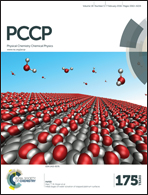Introduction of carbon nano-tubes into the phosphor to restrain the saturation behavior in low voltage cathodoluminescence
Abstract
To restrain the saturation behavior in low voltage cathodoluminescence, a small amount of carbon nano-tubes (CNT) was introduced into the phosphor to form CNT-introduced phosphor material. In the specific working conditions in low voltage cathodoluminescence, the field enhancement effect is initiated in the CNT-introduced phosphor material, and the local electric fields surrounding the top of each CNT is much stronger than the background electric field. The CNTs, with enhanced local electric fields surrounding their tops, play a key role in removing the electrons in the phosphor material, in which the CNTs act as convenient channels for electrons to be removed in cathodoluminescence. By introducing a small amount of CNTs into the phosphor, the saturation behavior in low voltage cathodoluminescence is effectively restrained, which has a similar effect as improving the conductivity of the phosphor material. The field enhancement effect in the CNT-introduced phosphor material may be activated and become more effective when the applied current density in cathodoluminescence is increased, thus the dynamic performance of the CNT-introduced phosphor material is favorable in low voltage cathodoluminescence.


 Please wait while we load your content...
Please wait while we load your content...